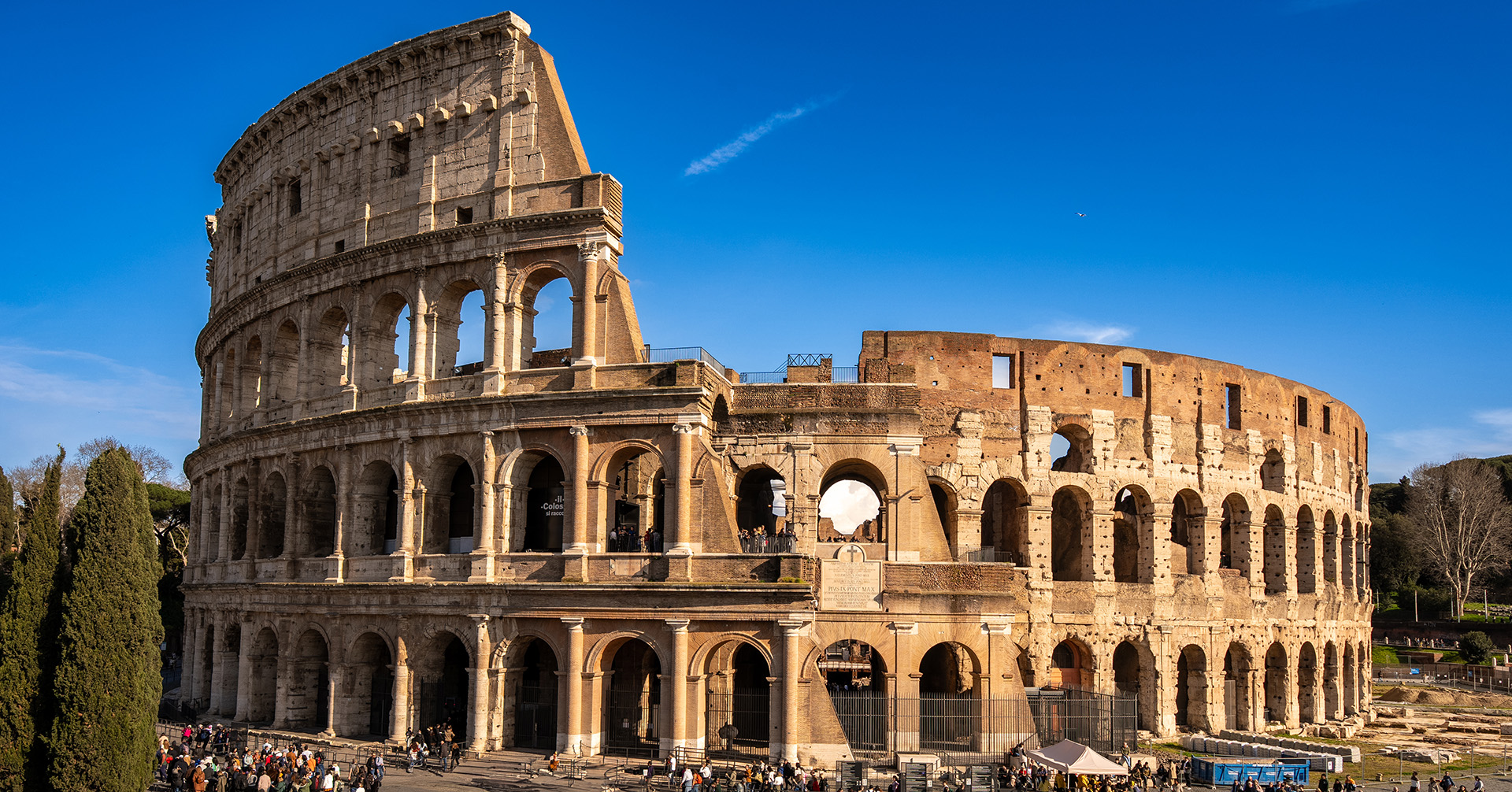
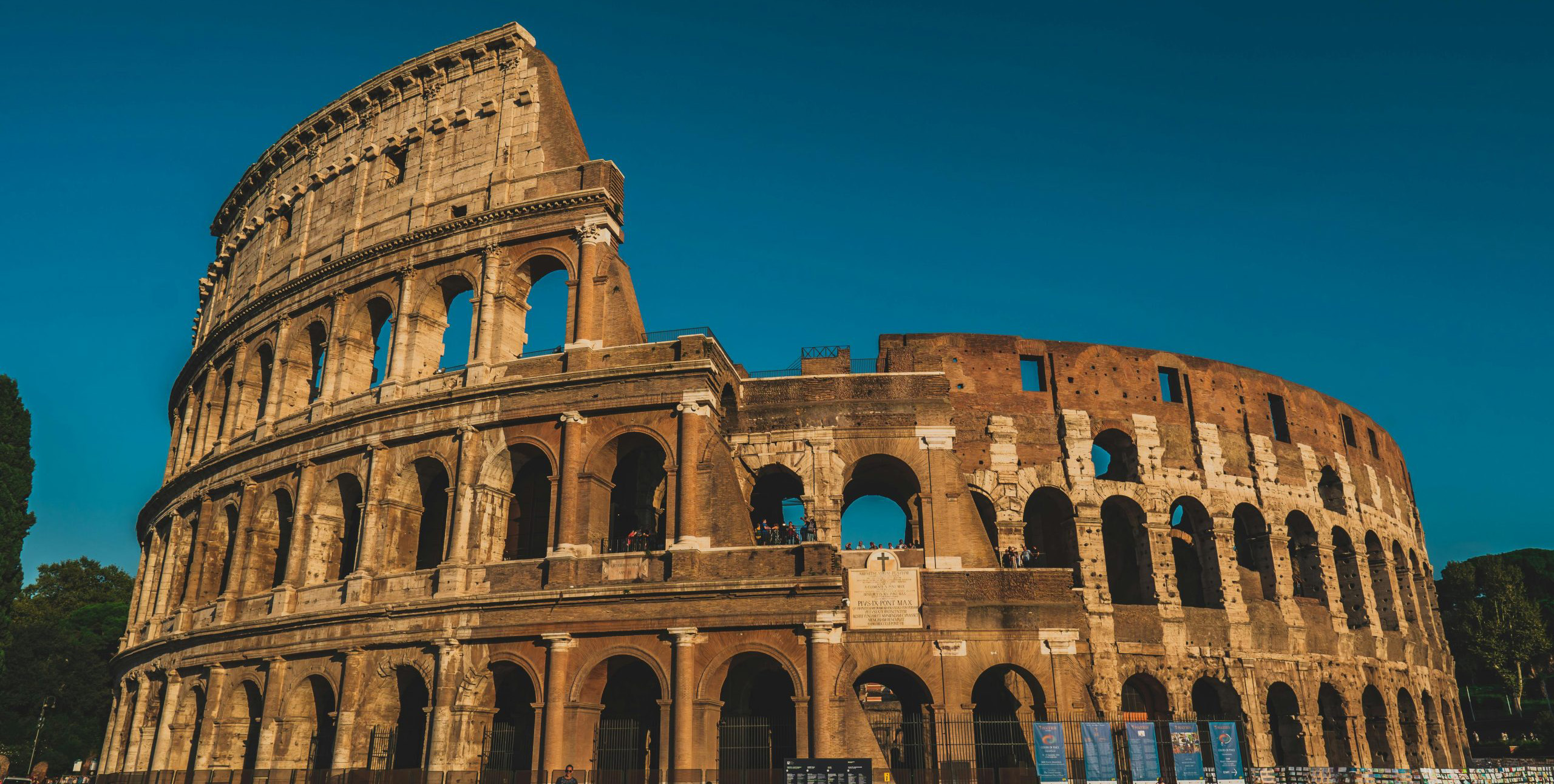
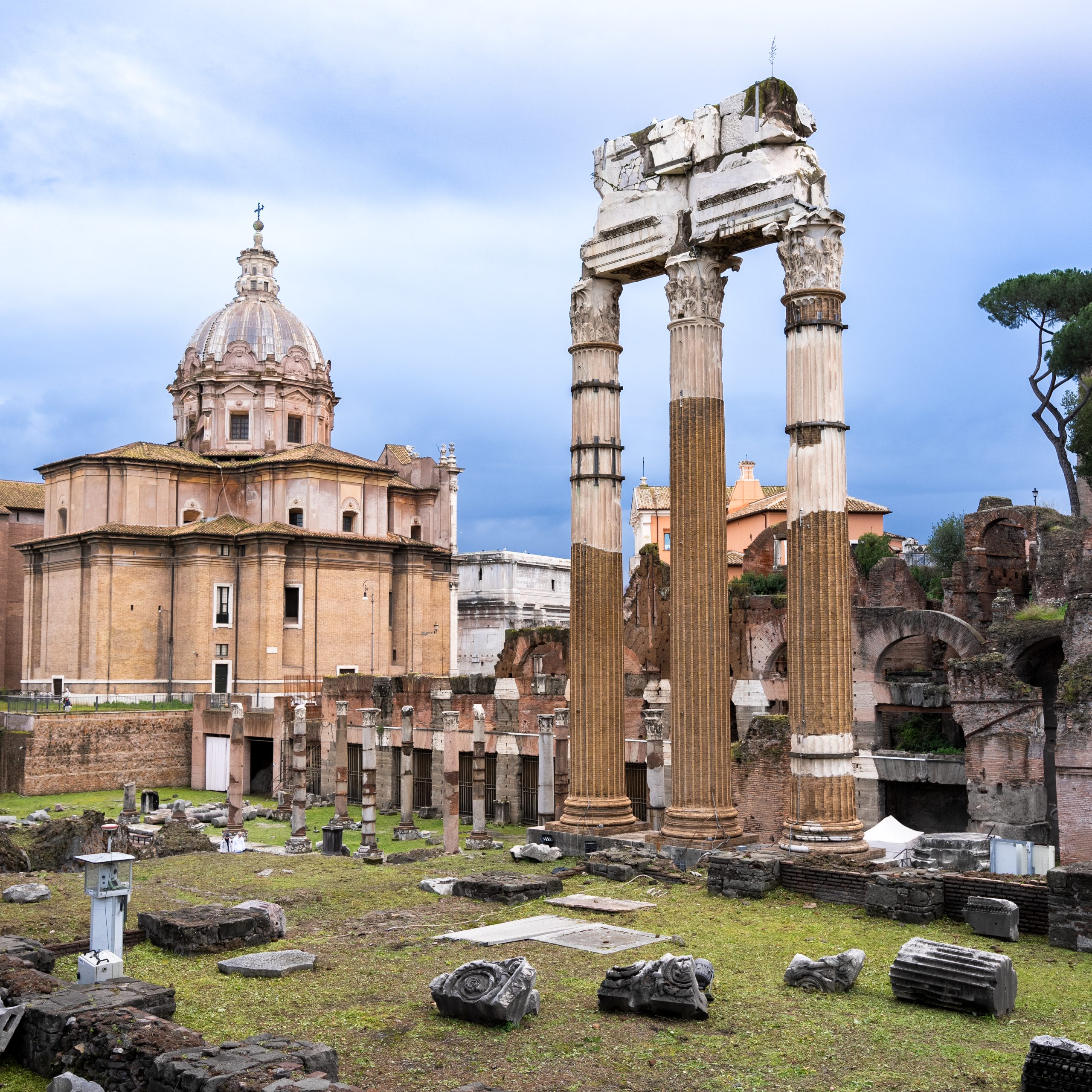
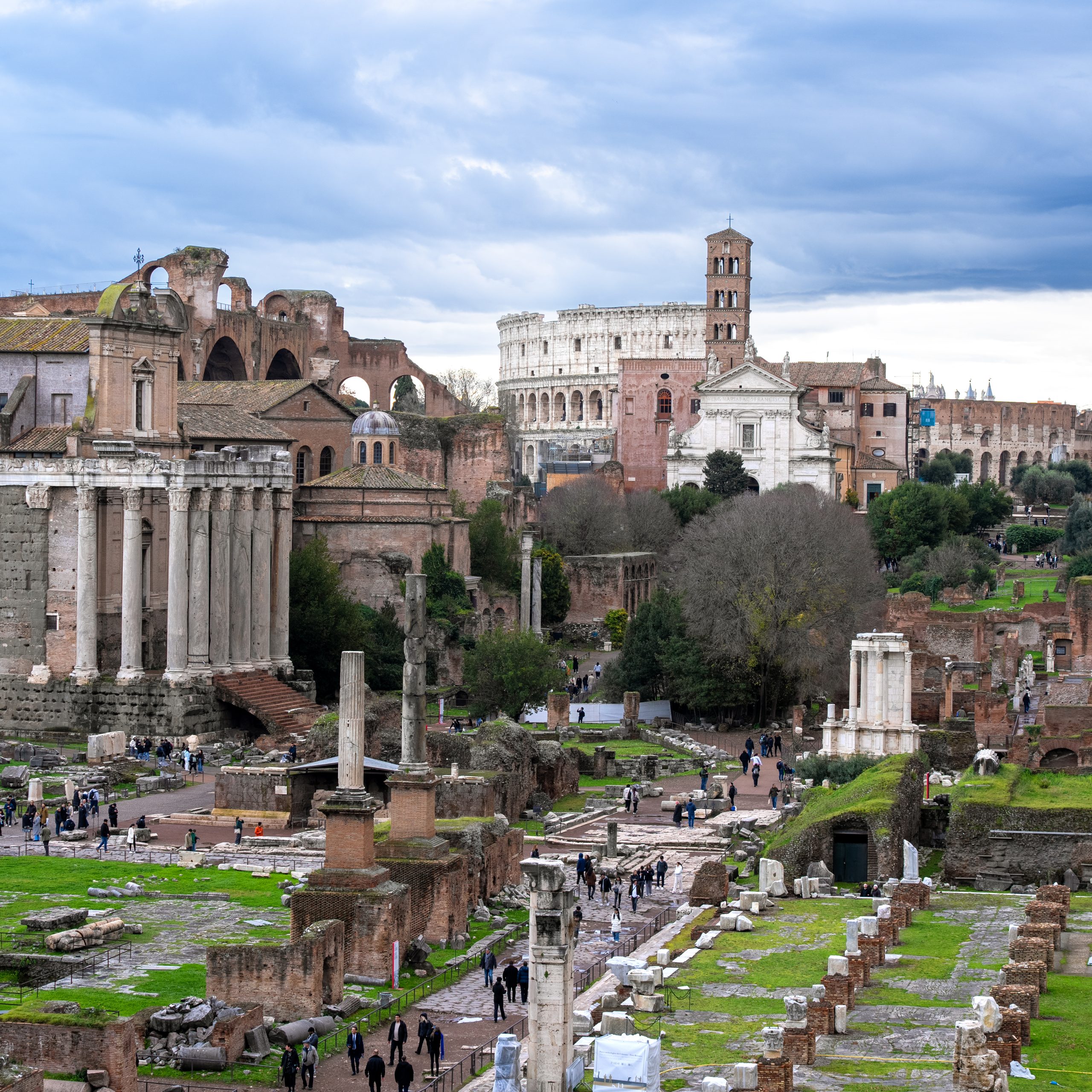
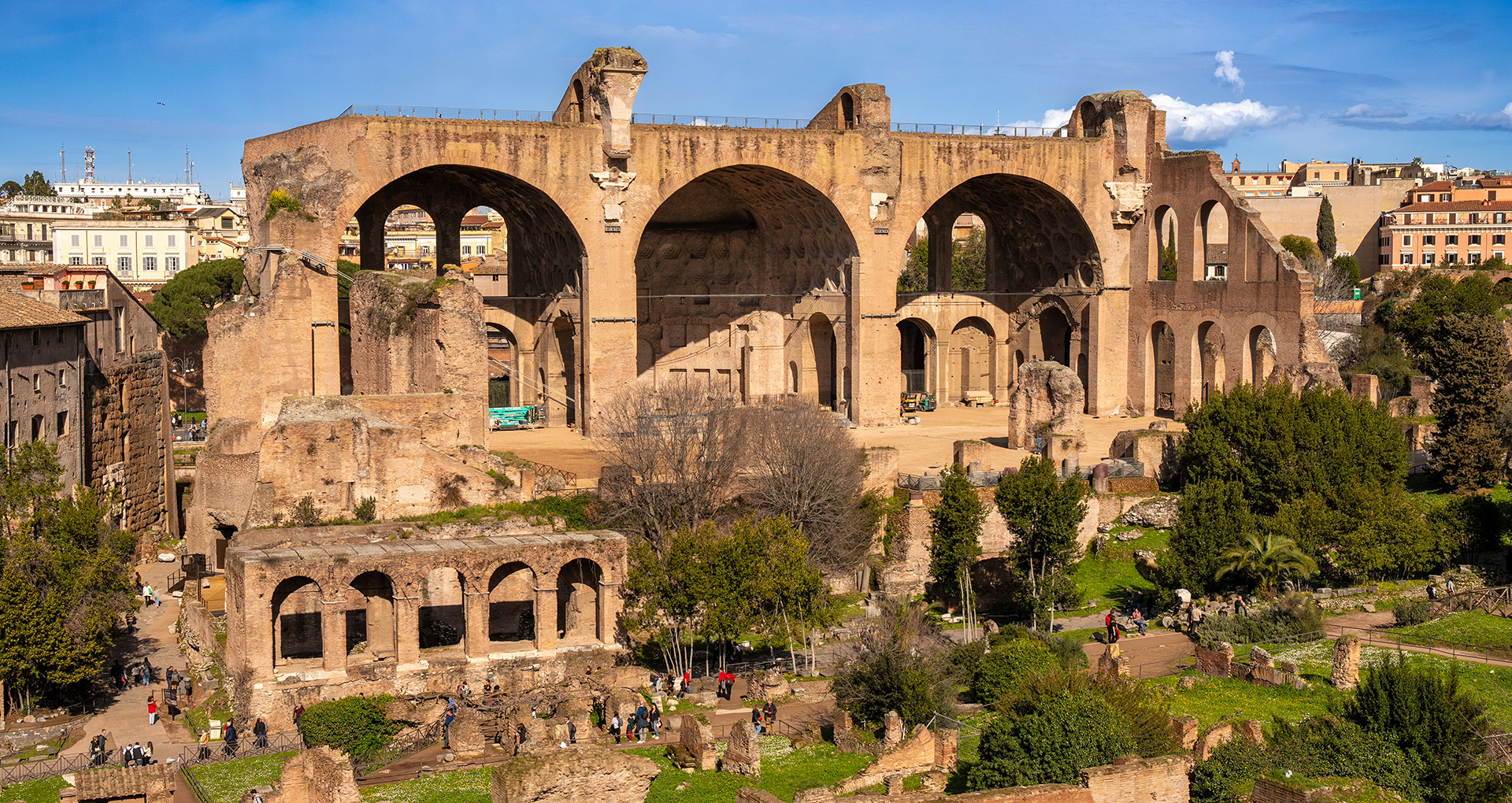
The Colosseum Rome is one of the world’s most iconic landmarks, drawing millions of visitors annually. As a must-see historical site, this ancient Roman amphitheater offers a fascinating journey into the heart of ancient Rome. Whether you’re a history enthusiast, architecture lover, or adventure seeker, a Colosseum tour will bring you closer to one of the world’s greatest feats of engineering. Step into its grand arches and feel the energy of the past, where gladiators once fought and crowds roared.
This guide will help you explore its history, design, tours, and the best ways to enjoy your visit. We’ll also cover fascinating facts, nearby attractions, and tips for visiting with kids. You’ll find practical advice on buying Skip the Line Colosseum tickets, choosing the best Colosseum guided tour, and deciding the best time to visit the Colosseum during October, November, December, and January 2025–2026.
Whether you are planning your first trip or returning for a deeper experience, this guide has everything you need.
The Colosseum was built between 70 and 80 AD under Emperor Vespasian and his son Titus. It was designed as a grand entertainment space for the people of Rome. The ancient Roman amphitheater hosted gladiator fights, animal hunts, and public executions. It could hold up to 50,000 spectators, making it the largest amphitheater of its time. The design of the Colosseum was ahead of its time, featuring multiple entry gates, seating arrangements for different social classes, and an underground complex for performers and animals.
The construction of the Colosseum was a massive undertaking, involving thousands of slaves and skilled laborers. It was built using travertine limestone, concrete, and brick, with wooden floors covering the underground chambers. The Colosseum Rome map from ancient times shows that it had four levels, each serving a specific function. The lowest level was reserved for important figures, while the upper levels accommodated common citizens. Women and the poor were assigned to the highest level, reflecting the strict social hierarchy of Roman society.

This massive structure was a political statement as well. The emperors used it to gain the public’s approval by offering free events and distributing food during the games. These spectacles were called “bread and circuses” because they kept the Roman people entertained and distracted from political issues. Over the years, the Colosseum became a place of legend, inspiring stories of brave gladiators and heroic battles. Some gladiators became celebrities, winning their freedom after many victories. Others were prisoners of war or criminals, forced to fight for their lives.
Beyond entertainment, the Colosseum also played a role in religious and political events. It was sometimes used for public speeches, imperial ceremonies, and even dramatic performances. The vast crowds that gathered in the Colosseum helped emperors communicate their power and maintain control over the people.
The influence of the Colosseum spread beyond Rome. Its design inspired amphitheaters across the Roman Empire, from North Africa to modern-day France. Even today, modern stadiums take inspiration from its efficient seating arrangement and crowd control techniques. The Colosseum remains a masterpiece of ancient engineering and a lasting reminder of Rome’s incredible achievements.
Over the years, the Colosseum suffered damage from earthquakes, fires, and stone theft. The biggest earthquake in 1349 caused the south side of the Colosseum to collapse, leaving the ruin we see today. Despite this, it remains a symbol of Rome’s strength. Restoration efforts have helped preserve its beauty, making it one of the most visited UNESCO World Heritage sites in Rome.
During the Middle Ages, the Colosseum was repurposed for various uses, including housing, workshops, and even a small fortress. In the Renaissance, many of its stones were taken for new buildings in Rome. The Colosseum Rome inside changed significantly during this period, with parts of the structure dismantled and repurposed for other projects, including St. Peter’s Basilica in Vatican City.
However, in the 19th and 20th centuries, major restoration projects began, ensuring the Colosseum remained a historical treasure. Today, the Italian government continues to invest in Colosseum conservation, protecting it from pollution and environmental damage. Visitors can now explore both the Colosseum Rome at night and during the day, thanks to ongoing preservation work.
Despite the damage, the Colosseum still stands as a powerful reminder of Rome’s imperial past. The Colosseum’s arches, underground chambers, and spectator stands continue to amaze visitors from all over the world. Whether you are visiting in person or taking a Colosseum virtual tour, you can experience the wonder of this ancient site and imagine the grandeur of Roman entertainment.
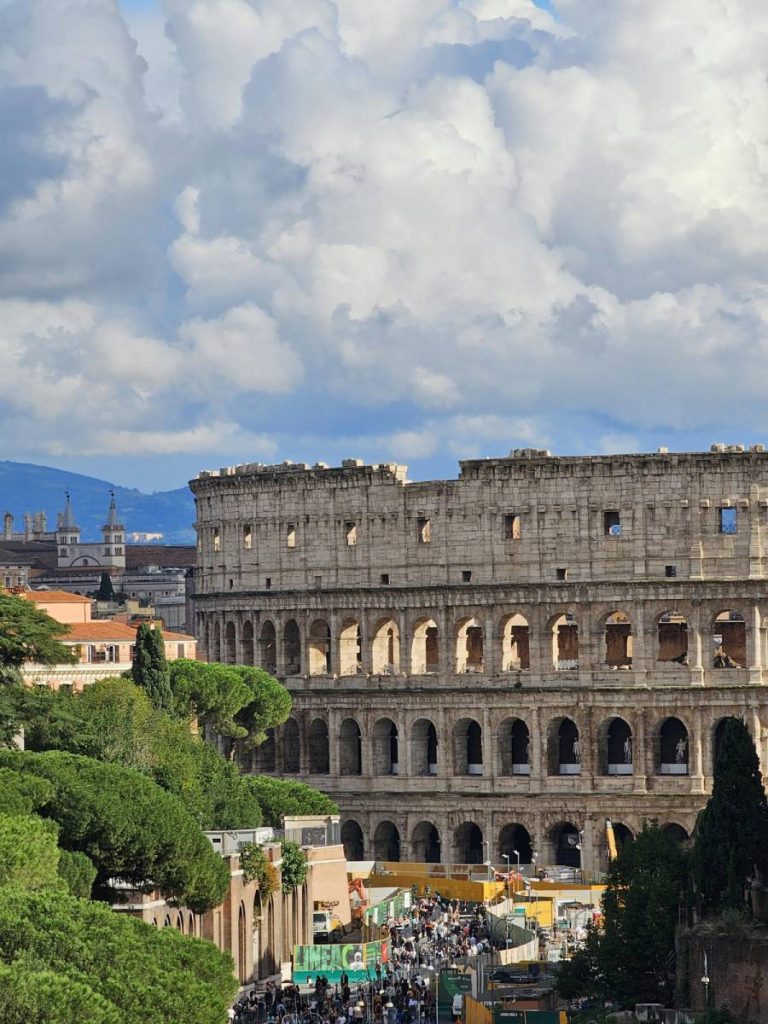
The Colosseum Rome was a true masterpiece of Roman engineering and innovation. Built with concrete, travertine limestone, and brick-faced tufa, it was designed to withstand the test of time. Its oval shape, measuring about 189 meters long and 156 meters wide, ensured that every spectator had a good view of the events in the arena. The massive structure could hold up to 50,000 spectators, making it the largest amphitheater ever built in ancient Rome.
The Colosseum’s façade was divided into four levels. The first three levels featured a distinct architectural style:
The fourth level had a flat wall with rectangular windows and wooden masts used to support a large retractable awning called the velarium. This massive awning was controlled by sailors and helped provide shade for spectators, making long events more comfortable.
The entrances and exits of the Colosseum were strategically designed to allow a smooth flow of people. The structure had 80 arched entrances, which helped manage crowd movement efficiently. This system, known as the vomitoria, allowed people to enter and leave the amphitheater quickly, a design concept still used in modern stadiums today.
In 1980, the Colosseum became part of the UNESCO World Heritage sites in Rome. It remains an important symbol of Italy’s history and culture, attracting millions of tourists every year.
Today, the Colosseum hosts special events and concerts, making it a unique venue for modern entertainment. It has been used for operas, charity events, and historical reenactments.
While gladiator battles no longer take place, the Colosseum remains a place of spectacle, often serving as the backdrop for significant events, including international peace celebrations and public exhibitions.
The Colosseum is one of the top things to do in Rome. Every year, tourists buy Colosseum Rome tickets to explore this ancient site. It is a key part of the city’s economy and tourism sector.
Many travel agencies offer Colosseum guided tours that include nearby attractions like the Roman Forum and Palatine Hill, giving visitors a complete picture of ancient Rome.
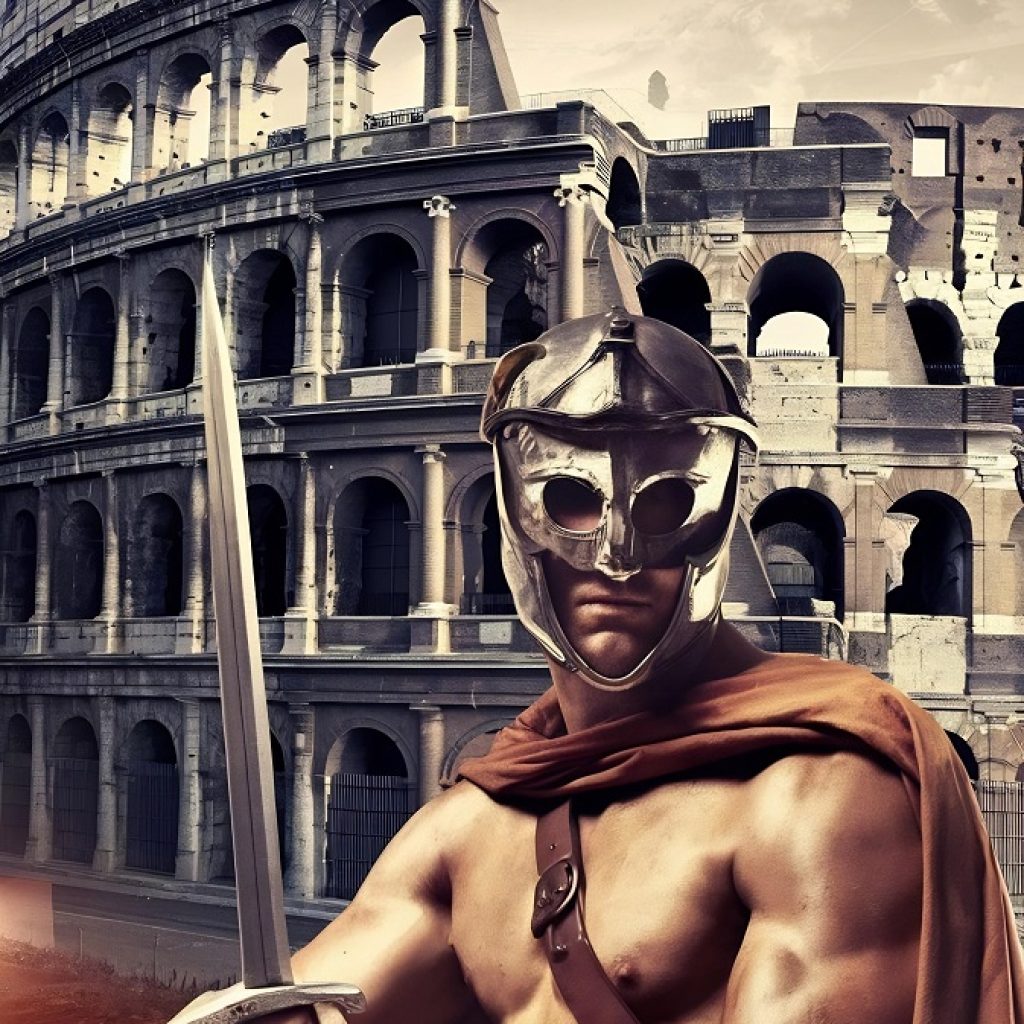
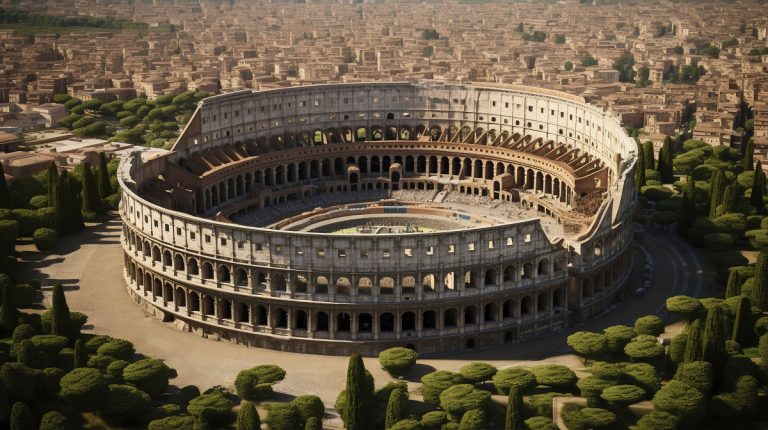
The Hypogeum was the backstage of the Colosseum. This underground area had two levels with tunnels, animal cages, and waiting rooms for gladiators.
Visitors can book a Colosseum underground tour to explore these hidden chambers. A Colosseum guided tour gives access to areas not open to the general public.
The Romans designed a smart system of lifts and trapdoors to move animals and fighters into the arena. This made the events more exciting and unpredictable.
You can buy Colosseum Rome tickets online or at the entrance. Booking in advance is recommended to avoid long lines.
A Colosseum skip-the-line ticket helps visitors save time. A Colosseum guided tour offers deeper insights into the history of the site.
Some tours even offer a Colosseum night tour, providing a unique way to experience this ancient wonder under the stars.
Gladiators were skilled fighters who participated in combat for the entertainment of Roman citizens. Many were slaves, prisoners of war, or criminals, but some were free men who chose to fight for wealth and fame. Gladiator training was intense, taking place in specialized schools where they learned different combat styles and techniques. These warriors used a variety of weapons, such as swords, tridents, and nets, depending on their fighting class.
The Colosseum was more than just a place for entertainment; it was a powerful tool for political propaganda. Emperors used games to gain public favor, distract the masses from social issues, and demonstrate their strength. Events held at the Colosseum included gladiator battles, mock sea battles, and wild animal hunts. These spectacles reinforced Rome’s dominance and showcased the empire’s military power.
The games were often free to attend, ensuring that people from all social classes could witness the bloodshed. Gladiators who won multiple battles became celebrities, and some even earned their freedom. However, for most, the arena was a place of life-or-death combat, where only the strongest survived.
The Colosseum remains an enduring symbol of Rome’s fascination with entertainment, power, and spectacle. Even today, its legacy influences books, movies, and modern sports culture, keeping the spirit of the gladiators alive.
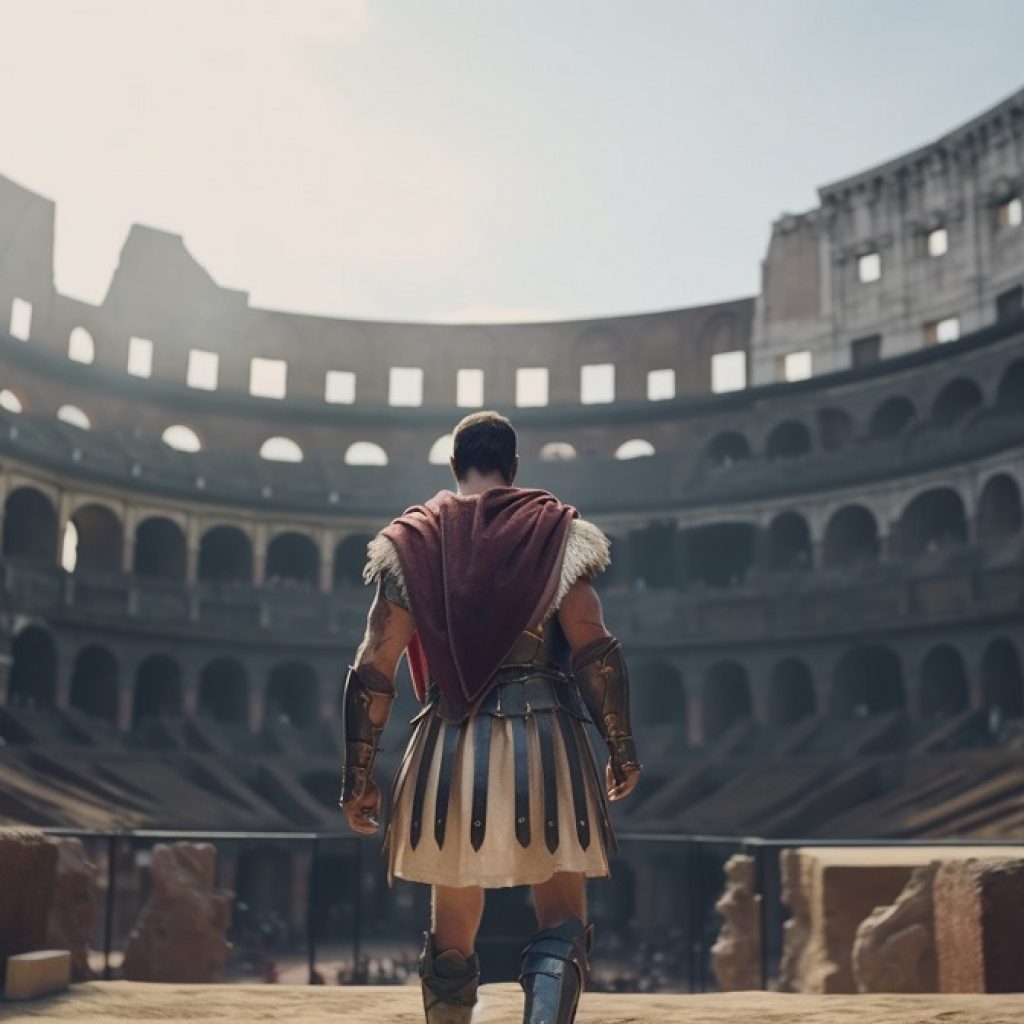
The golden light at sunset makes the Colosseum Rome photos stunning. This is the perfect time for photography lovers.
Many Colosseum night tours include sunset experiences, offering a quieter and more intimate visit.
The Colosseum at night feels mysterious and magical, making it a unique experience.
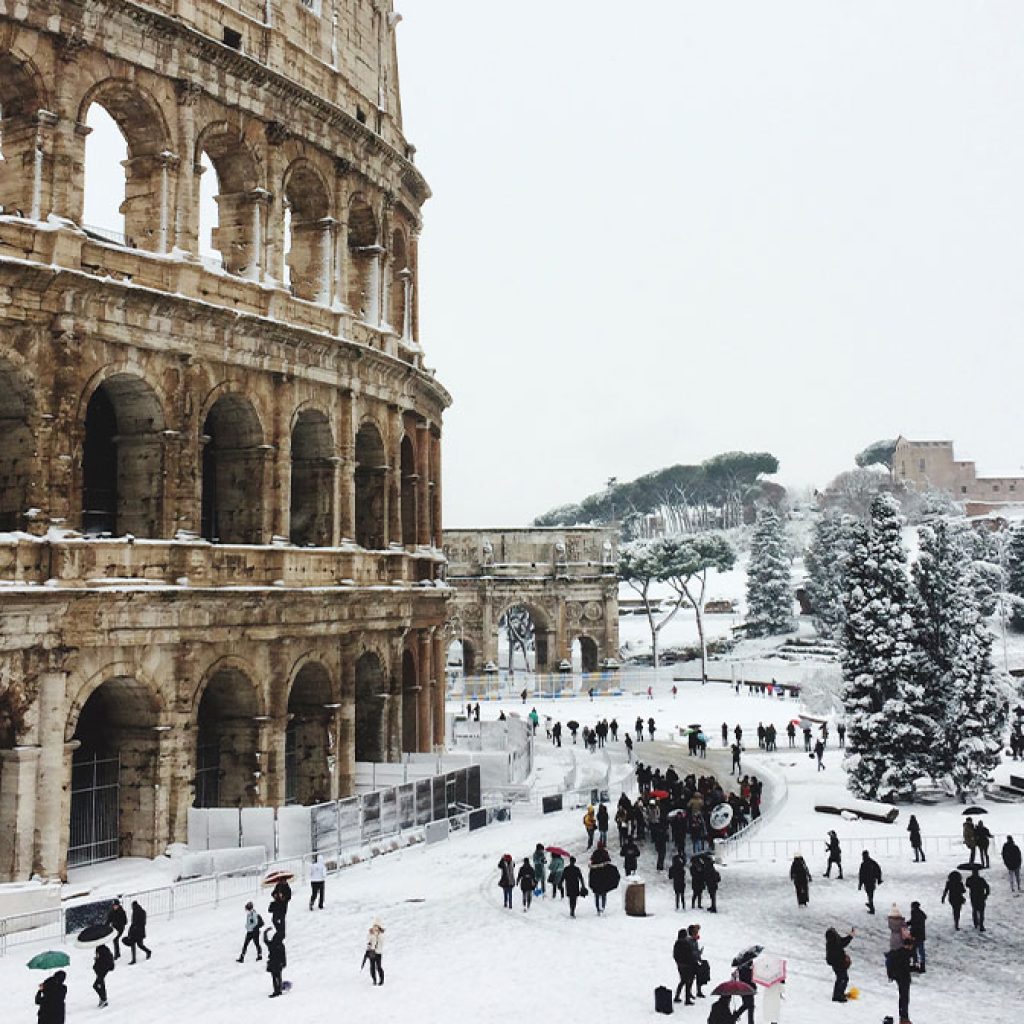

The best time to visit is early morning or late afternoon to avoid large crowds.
The golden light at sunset makes the Colosseum Rome photos stunning. This is the perfect time for photography lovers.
Many Colosseum night tours include sunset experiences, offering a quieter and more intimate visit.
The Colosseum at night feels mysterious and magical, making it a unique experience.


The Roman Forum was the heart of ancient Rome. It was a place for politics, business, and religious ceremonies.
Palatine Hill is one of the oldest parts of Rome. It offers stunning views of the Colosseum and the city.
The Colosseum has appeared in many movies, including Gladiator.


Yes! The Colosseum is family-friendly, and kids love exploring the massive arena.
Some tours offer fun activities and storytelling to keep kids engaged.
A Colosseum virtual tour lets you explore the site from home through interactive maps and videos.
Many apps offer 360-degree views and audio guides for a digital experience.
A virtual tour is a great way to learn about the history of the Colosseum without traveling.
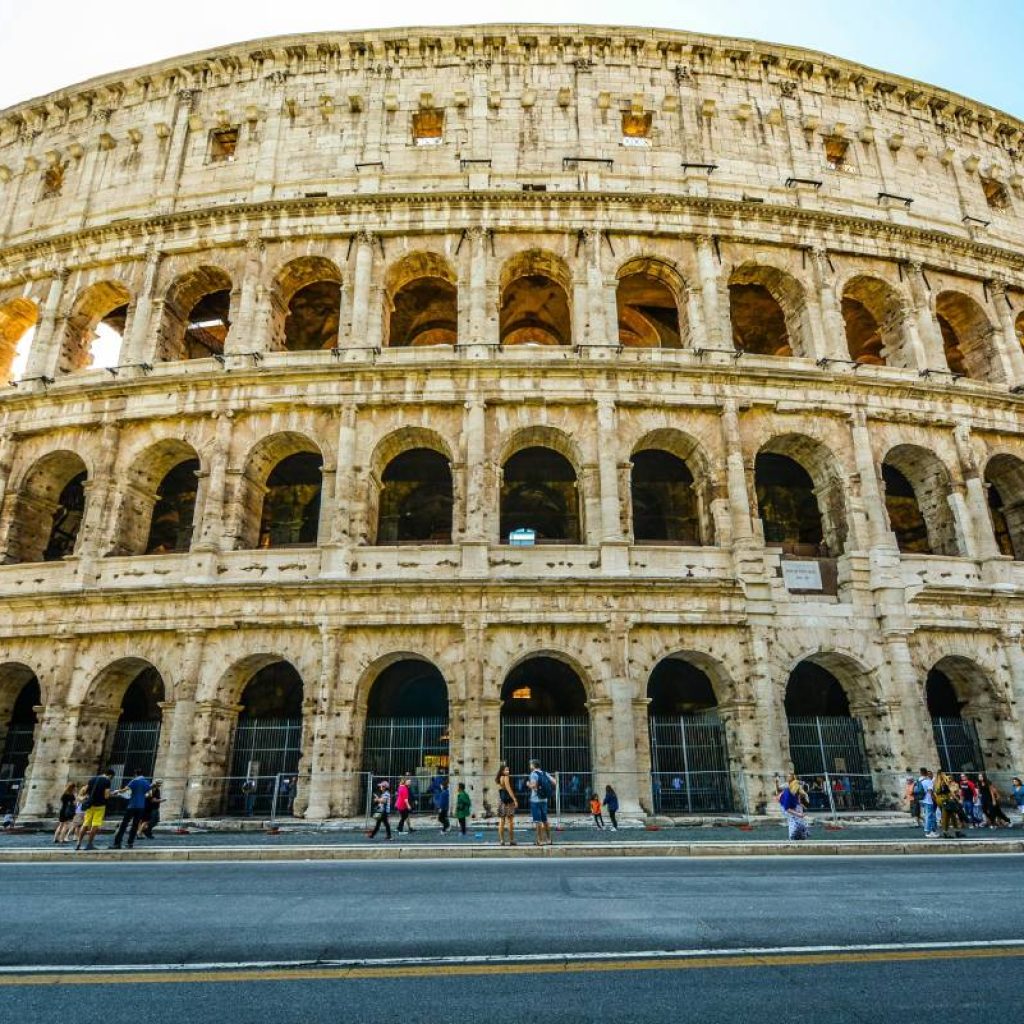
The Colosseum Rome is a place where history comes alive. Whether you visit in person or take a Colosseum virtual tour, this ancient wonder will leave you amazed. Book your Colosseum guided tour, explore the underground chambers, and enjoy one of the best things to do in Rome!
The Colosseum is an ancient amphitheater in Rome, Italy, built in 80 AD. It was used for gladiatorial contests, public spectacles, and entertainment in ancient Rome.
The Colosseum is famous for its historical significance, architectural brilliance, and role as a symbol of ancient Roman engineering and culture.
The Colosseum is over 1,940 years old, having been completed in 80 AD.
Yes, the Colosseum is one of the New Seven Wonders of the World, as declared in 2007.
The Colosseum is located in the center of Rome, near the Roman Forum and Palatine Hill. The address is Piazza del Colosseo, 1, 00184 Rome, Italy.
The Colosseum is typically open from 8:30 AM to 4:30 PM, but hours may vary by season. Check the official website for the most up-to-date information.
A typical visit lasts 1.5 to 3 hours, depending on how much you want to explore.
Yes, the Colosseum is partially wheelchair accessible, with elevators and ramps available. However, some areas, like the underground, may not be accessible
No, food and drinks are not allowed inside the Colosseum, except for water.
Yes, there are restrooms available for visitors near the entrance.









